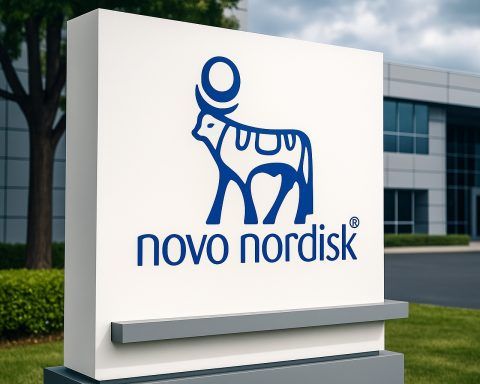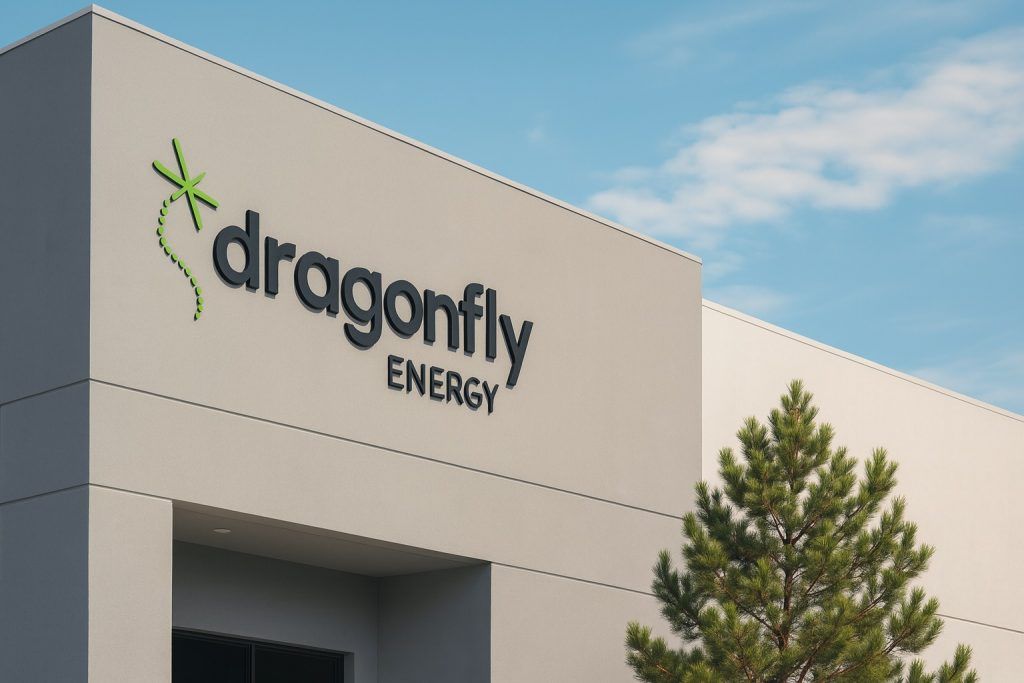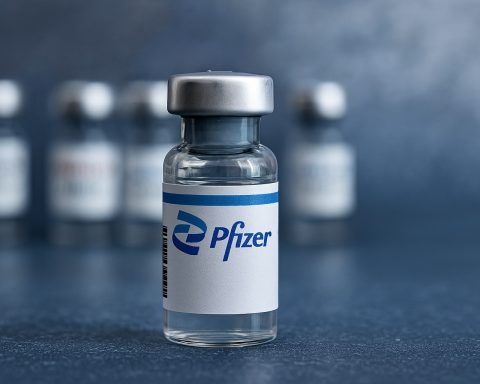Johnson & Johnson has struck a $3.05 billion cash deal to acquire Halda Therapeutics, a privately held cancer-drug developer based in New Haven, Connecticut, in one of 2025’s biggest oncology takeovers so far. [1]
The move deepens J&J’s bet on cancer medicines just as sales of its long‑time blockbuster psoriasis drug Stelara are being hit hard by a wave of cheaper biosimilar rivals. [2]
Key points
- Deal value: J&J will buy Halda Therapeutics for $3.05 billion in cash, with the transaction expected to close in the coming months, subject to regulatory approvals. [3]
- Pipeline focus: Halda’s lead candidate, HLD‑0915, is an experimental treatment for metastatic castration‑resistant prostate cancer (mCRPC), alongside earlier‑stage programs in breast, lung and other solid tumors. [4]
- Novel technology: Halda has developed RIPTAC™ (Regulated Induced Proximity Targeting Chimeras) — oral “hold‑and‑kill” molecules designed to selectively kill cancer cells that have become resistant to existing therapies. [5]
- Strategic rationale: The acquisition bolsters J&J’s oncology franchise and helps offset revenue pressure from Stelara, whose sales are tumbling as biosimilars roll out globally. [6]
- Part of a bigger wave: It’s the latest multibillion‑dollar pharma deal in 2025, following Pfizer’s roughly $10 billion purchase of obesity biotech Metsera and Merck’s $9.2 billion bid for flu‑drug maker Cidara Therapeutics. [7]
Inside Johnson & Johnson’s Halda Therapeutics takeover
J&J said on Monday that it will acquire Halda Therapeutics for $3.05 billion in cash, adding a new set of precision oncology assets to its Innovative Medicine unit. [8]
According to the company’s announcement, the purchase will expand J&J’s presence in treatments for solid tumors, with a particular emphasis on prostate cancer, one of the most commonly diagnosed cancers in men worldwide. [9]
The deal:
- Is structured as an all‑cash transaction (no stock component disclosed).
- Targets closing “within the next few months,” pending customary regulatory and antitrust reviews.
- Will bring Halda’s clinical and preclinical oncology programs, and its RIPTAC platform, under the J&J umbrella. [10]
Financial terms beyond the headline price (such as potential milestones or earn‑outs) have not been publicly detailed as of today.
This is J&J’s second major deal of the year. In January, the company agreed to acquire neuroscience specialist Intra‑Cellular Therapies for about $14.6 billion, a move that significantly beefed up its neurology portfolio. [11]
Together, the Halda and Intra‑Cellular transactions underscore how aggressively J&J is leaning into specialty medicines as legacy products lose exclusivity.
Who is Halda Therapeutics?
Halda Therapeutics is a privately held biotech founded by Yale professor Craig Crews, a pioneer in targeted protein degradation. The company is headquartered in New Haven, Connecticut, in a growing cluster of oncology and translational‑medicine startups linked to the Yale ecosystem. [12]
RIPTAC: a new “hold‑and‑kill” approach
Halda’s science revolves around RIPTAC™ (Regulated Induced Proximity Targeting Chimeras), a proprietary class of heterobifunctional small molecules. Unlike classic targeted therapies that inhibit a single protein, RIPTACs are designed to:
- Bind a cancer‑specific protein, expressed at high levels in tumor cells.
- Simultaneously bind an essential “housekeeping” protein that healthy cells also rely on.
- Physically bring those two proteins together, disrupting the essential protein’s function specifically in cells that express the cancer marker, leading to cancer cell death while largely sparing normal tissue. [13]
Halda describes this as a “hold and kill” mechanism — essentially trapping an essential protein in a non‑functional state only inside cancer cells. [14]
Lead programs and funding
Halda’s pipeline is focused on major solid tumors:
- HLD‑0915 – an oral RIPTAC therapeutic for metastatic castration‑resistant prostate cancer (mCRPC), now in early clinical development. A Phase 1 trial in mCRPC began in 2025. [15]
- A second RIPTAC program targeting metastatic breast cancer, currently in early‑stage development. [16]
- Additional preclinical programs aimed at breast, lung and other tumor types, according to J&J’s and Halda’s disclosures. [17]
To fund this work, Halda raised a $126 million Series B extension in 2024, bringing total capital raised to about $202 million from investors including RA Capital Management, Frazier Life Sciences, Vida Ventures, Boxer Capital and Taiho Ventures. [18]
For those investors, today’s $3.05 billion exit represents a very substantial step‑up and one of the standout biotech M&A outcomes of 2025.
A direct response to Stelara’s rapidly eroding sales
J&J’s push into new oncology modalities isn’t happening in a vacuum. It’s a direct response to a “patent cliff” for its immunology workhorse Stelara (ustekinumab), which has treated psoriasis, Crohn’s disease and other inflammatory conditions for more than a decade.
Key context:
- Stelara’s key patents began to expire in 2023, opening the door to multiple biosimilar competitors. [19]
- By early 2025, Stelara’s quarterly sales were already down more than 30% year‑over‑year, with some analyses estimating a ~34% drop in Q1 alone as payers switched to lower‑priced biosimilars. [20]
- J&J has acknowledged that 2025 is the inflection year where Stelara erosion significantly drags on revenue, even as new drugs in oncology and immunology help offset the decline. [21]
In that light, buying Halda serves several strategic purposes:
- Revenue replacement over the long term
Successful RIPTAC drugs for prostate or breast cancer could generate multibillion‑dollar annual sales late in the decade, helping to fill the hole left by Stelara. - Deeper presence in hard‑to‑treat solid tumors
J&J already markets a range of oncology drugs, but much of the industry’s growth focus is shifting from blood cancers to solid tumors where resistance and heterogeneity remain major hurdles. RIPTAC’s mechanism is explicitly designed to address tumor evolution and resistance, which are big causes of treatment failure. [22] - Synergies with J&J’s existing R&D
As J&J advances other innovative immunology and oncology assets — including the oral IL‑23 inhibitor icotrokinra (JNJ‑2113), now under regulatory review for plaque psoriasis — having a novel modality like RIPTAC broadens the company’s toolkit across cancer and immune‑mediated diseases. [23]
In short, Halda gives J&J more shots on goal in some of the most competitive and clinically challenging corners of oncology.
2025’s biotech deal boom: where Halda fits in
Today’s announcement is part of a surging wave of mid‑ to large‑cap biotech M&A as big pharma companies brace for multiple patent expiries.
Industry trackers have counted more than 20 pharmaceutical acquisitions in the $1–10 billion range so far in 2025, putting the sector on course for a record year. [24]
Among the most notable deals:
- Pfizer–Metsera: Pfizer clinched a roughly $10 billion agreement to buy obesity‑drug developer Metsera, prevailing over Novo Nordisk after a heated bidding war that unfolded through autumn 2025. [25]
- Merck–Cidara: Merck agreed to acquire Cidara Therapeutics for $9.2 billion, securing a long‑acting influenza antiviral (CD388) that could offer season‑long protection and help diversify Merck’s revenue as Keytruda approaches its own patent cliff later this decade. [26]
Against this backdrop, J&J’s $3.05 billion buyout of Halda sits squarely in the “pipeline‑replenishment” M&A category: acquiring promising, still‑early assets before they reach late‑stage valuation spikes.
J&J is also reshaping its broader portfolio. In October, the company said it plans to separate its slower‑growing orthopedics business from the rest of the group within roughly 18–24 months, effectively doubling down on higher‑growth innovative medicines and medtech. [27]
The Halda deal is consistent with that strategy: less focus on mature, lower‑growth hardware, more on high‑risk, high‑reward drugs.
What this could mean for patients and investors
For cancer patients
If Halda’s RIPTAC candidates deliver in the clinic, patients with advanced, treatment‑resistant cancers could see new oral options that:
- Target tumors based on protein expression patterns, not just single mutations.
- Potentially overcome resistance to current hormone therapies and targeted agents, especially in mCRPC and metastatic breast cancer. [28]
However, these therapies are still in early‑stage trials. Most candidates have not yet produced large‑scale efficacy or safety data, and there is no guarantee they will succeed. Patients should view today’s news as long‑term promise, not immediate change in standard care.
For investors
For shareholders, the Halda acquisition highlights several themes:
- Risk–reward balance: J&J is paying a multibillion‑dollar price for assets that are largely in Phase 1 or preclinical development. That’s a bold bet on a novel modality — but one that could pay off handsomely if RIPTAC drugs reach the market. [29]
- Capital allocation shift: Instead of plowing cash into buybacks or dividends alone, J&J is choosing to reinvest in growth, echoing a wider trend among big pharmas coping with falling revenues from aging blockbusters.
- Competitive positioning: As rivals snap up assets in obesity, respiratory disease and oncology, J&J’s move ensures it stays competitive in one of the highest‑value therapeutic areas.
J&J’s shares were little changed in premarket trading after the announcement, suggesting investors see the deal as strategically logical and already broadly in line with expectations for ongoing M&A. [30]
What to watch next
Over the coming quarters, several milestones will determine how impactful this deal really is:
- Regulatory approvals for the acquisition
Antitrust or regulatory pushback is not expected to be severe, given Halda’s early‑stage status and modest market share, but the deal still needs formal sign‑off. - Early clinical read‑outs from HLD‑0915
Safety and initial signals of efficacy in mCRPC will be closely watched by oncologists and investors alike. Strong data could validate the RIPTAC concept more broadly. - Expansion of RIPTAC into additional tumor types
J&J is likely to scale Halda’s platform across more indications — potentially including combinations with existing J&J oncology drugs. - How quickly Stelara’s decline is offset
Analysts will track whether incremental revenue from new assets — Intra‑Cellular Therapies, Halda’s portfolio and future launches such as icotrokinra — can stabilize J&J’s top line in the face of Stelara’s erosion. [31]
Bottom line
On 17 November 2025, Johnson & Johnson added another major piece to its post‑Stelara strategy, buying Halda Therapeutics for $3.05 billion and betting that a new “hold‑and‑kill” class of drugs can reshape how solid tumors are treated.
It’s a high‑stakes wager on unproven science — but also a clear signal that the next phase of big‑pharma growth will be built not just on new drugs, but on new ways of thinking about how to kill cancer cells in the first place.
References
1. www.reuters.com, 2. finance.yahoo.com, 3. www.reuters.com, 4. www.reuters.com, 5. haldatx.com, 6. www.biospace.com, 7. www.reuters.com, 8. www.reuters.com, 9. www.reuters.com, 10. www.reuters.com, 11. www.reuters.com, 12. haldatx.com, 13. haldatx.com, 14. haldatx.com, 15. www.reuters.com, 16. haldatx.com, 17. www.reuters.com, 18. haldatx.com, 19. www.reuters.com, 20. trial.medpath.com, 21. finance.yahoo.com, 22. haldatx.com, 23. en.wikipedia.org, 24. www.ft.com, 25. www.reuters.com, 26. www.reuters.com, 27. www.theedgemarkets.com, 28. haldatx.com, 29. www.reuters.com, 30. www.theedgemarkets.com, 31. finance.yahoo.com










